In the hidden corners of the world’s purest waters, rare fish species thrive, each with its own unique story and characteristics. These extraordinary creatures often go unnoticed, their existence closely tied to the delicate balance of their pristine environments. From the depths of isolated springs to the vast expanses of untouched rivers, these fish showcase the incredible diversity and adaptability of aquatic life. Here are some of the most remarkable species swimming in these unspoiled waters.
Devil’s Hole Pupfish
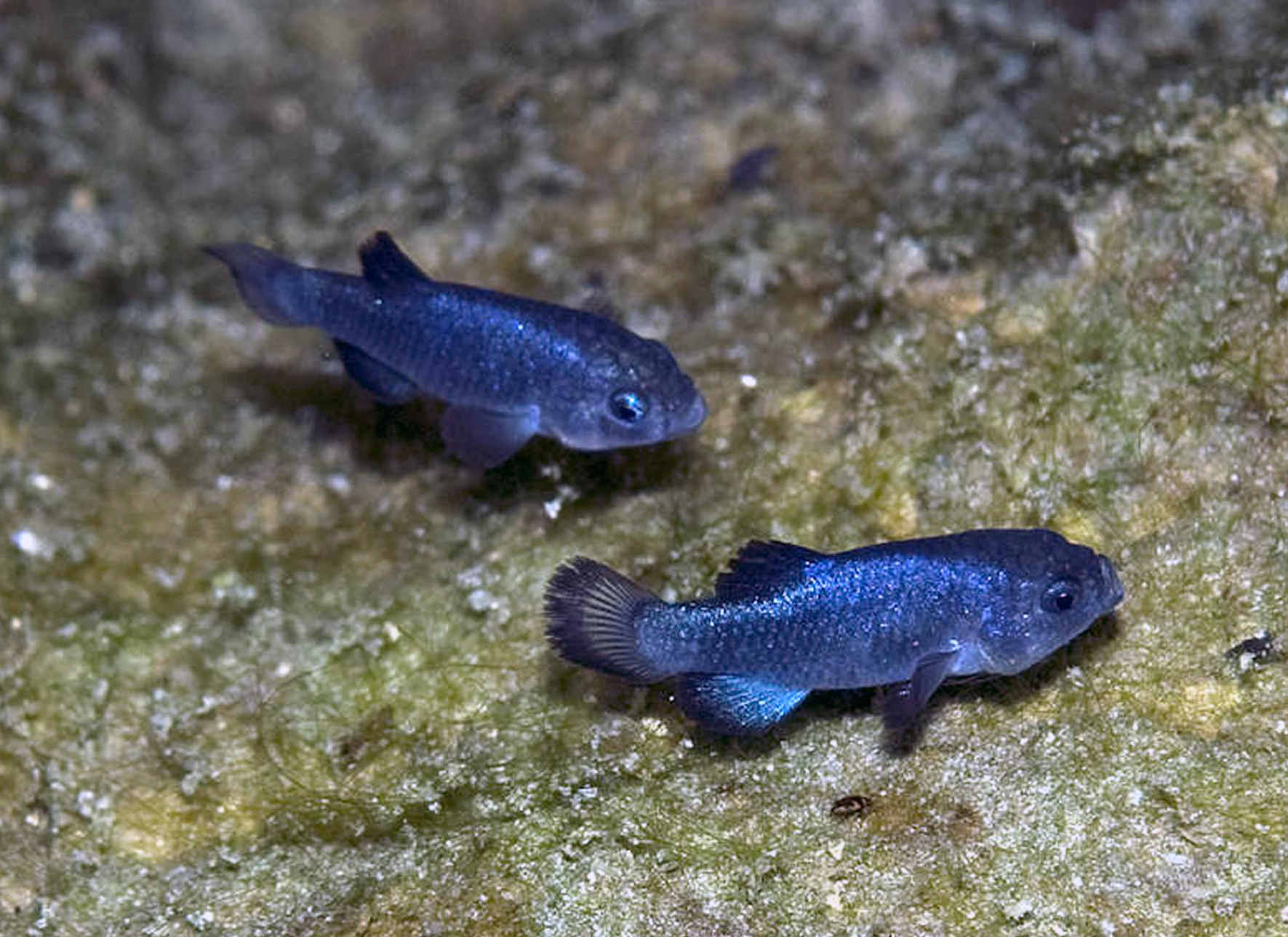
The Devil’s Hole Pupfish is one of the rarest fish in the world, found only in a single, remote location. This tiny, vibrant fish resides in the geothermal waters of Devil’s Hole, a deep, water-filled cavern in Nevada. Measuring just about an inch long, it has a bright blue color that stands out against its stark environment. Its survival depends on the warm, oxygen-rich waters of its unique habitat, making it highly sensitive to environmental changes. The species is critically endangered, with conservation efforts focusing on maintaining the delicate balance of its fragile ecosystem.
Giant Freshwater Stingray
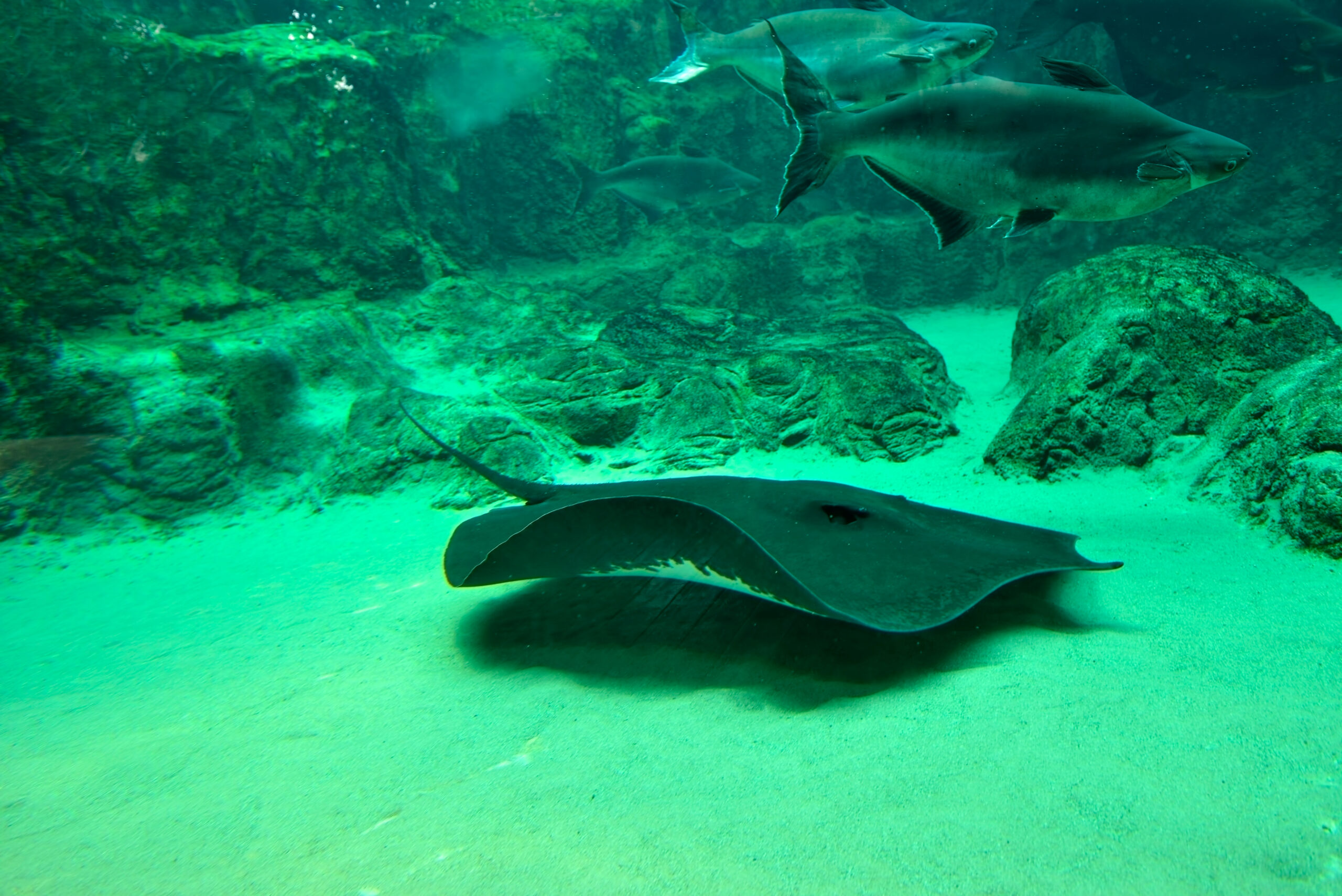
The Giant Freshwater Stingray is a massive and elusive species, primarily found in the murky rivers of Southeast Asia. This gentle giant can grow over 16 feet long and weigh more than 1,300 pounds. Its flat, disc-shaped body is perfectly adapted for life on the riverbed, where it hides in the sediment to ambush prey. Despite its size, it is a shy creature, rarely seen by humans. The species is threatened by habitat destruction and overfishing, making it a symbol of the urgent need for river conservation.
Chinese Paddlefish
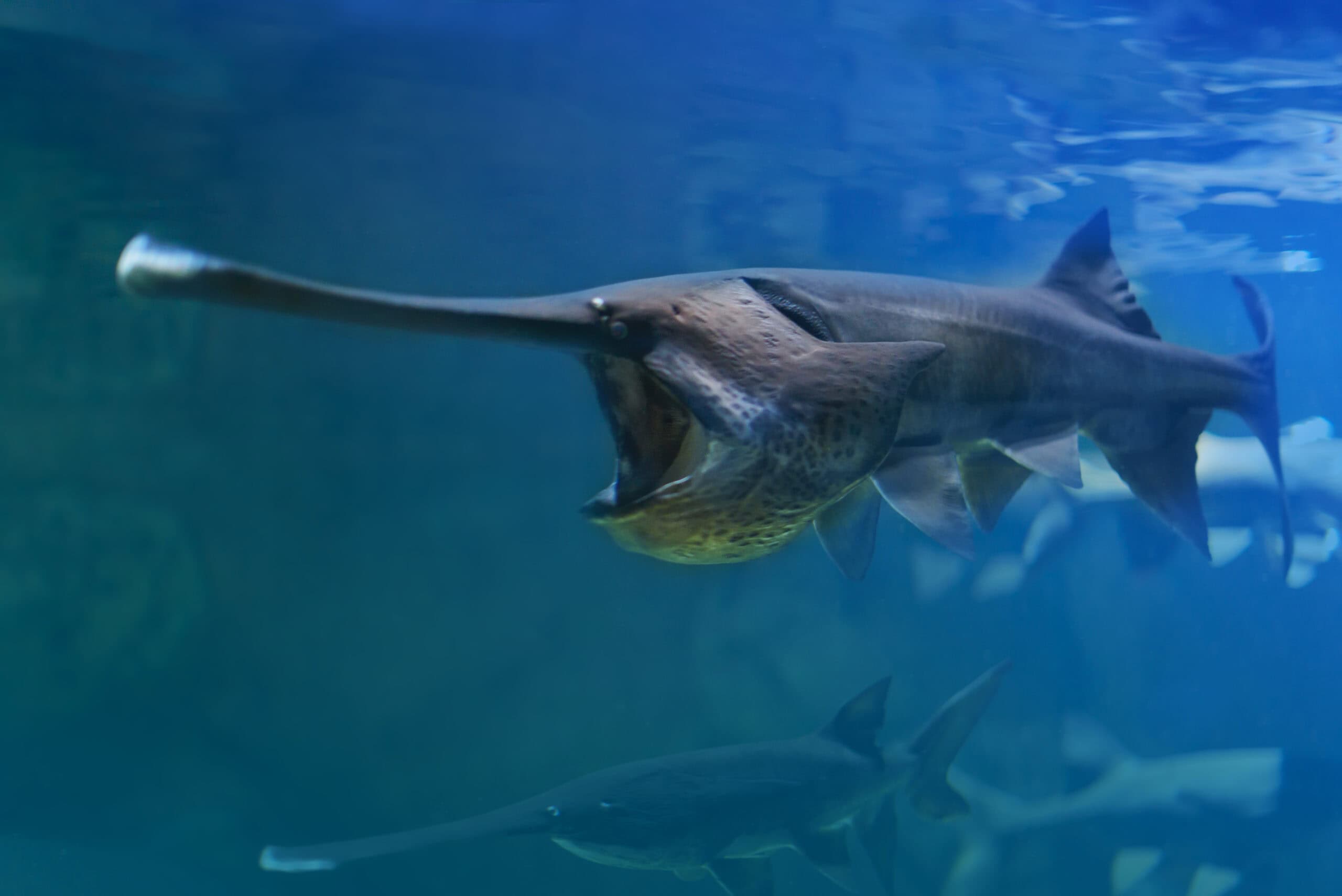
The Chinese Paddlefish, often referred to as the “Giant Panda of the Yangtze,” is a critically endangered species native to China. Recognizable by its long, paddle-like snout, this ancient fish could grow up to 23 feet in length. It inhabited the deep waters of the Yangtze River, using its snout to detect prey in the murky depths. Unfortunately, due to dam construction and overfishing, the species has not been seen since 2003, and it may now be extinct. The Chinese Paddlefish serves as a stark reminder of the impact human activities can have on aquatic life.
Coelacanth
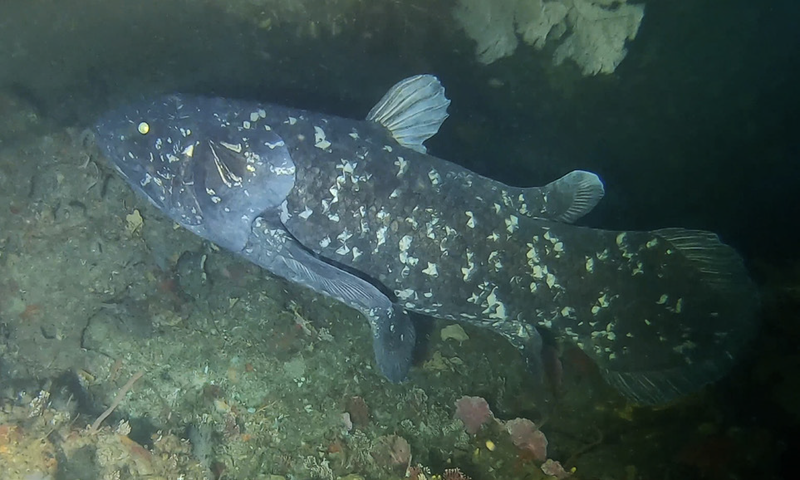
The Coelacanth is a living fossil, having remained largely unchanged for over 400 million years. This deep-sea dweller was thought to be extinct until its rediscovery off the coast of South Africa in 1938. With its lobed fins and unique jointed limb bones, the Coelacanth provides a rare glimpse into the early evolution of vertebrates. It can grow up to 6.5 feet long and has a bluish color with white spots. The Coelacanth lives in the dark, deep waters of the Indian Ocean, where it remains one of the most mysterious and enigmatic fish species.
Devil Fish
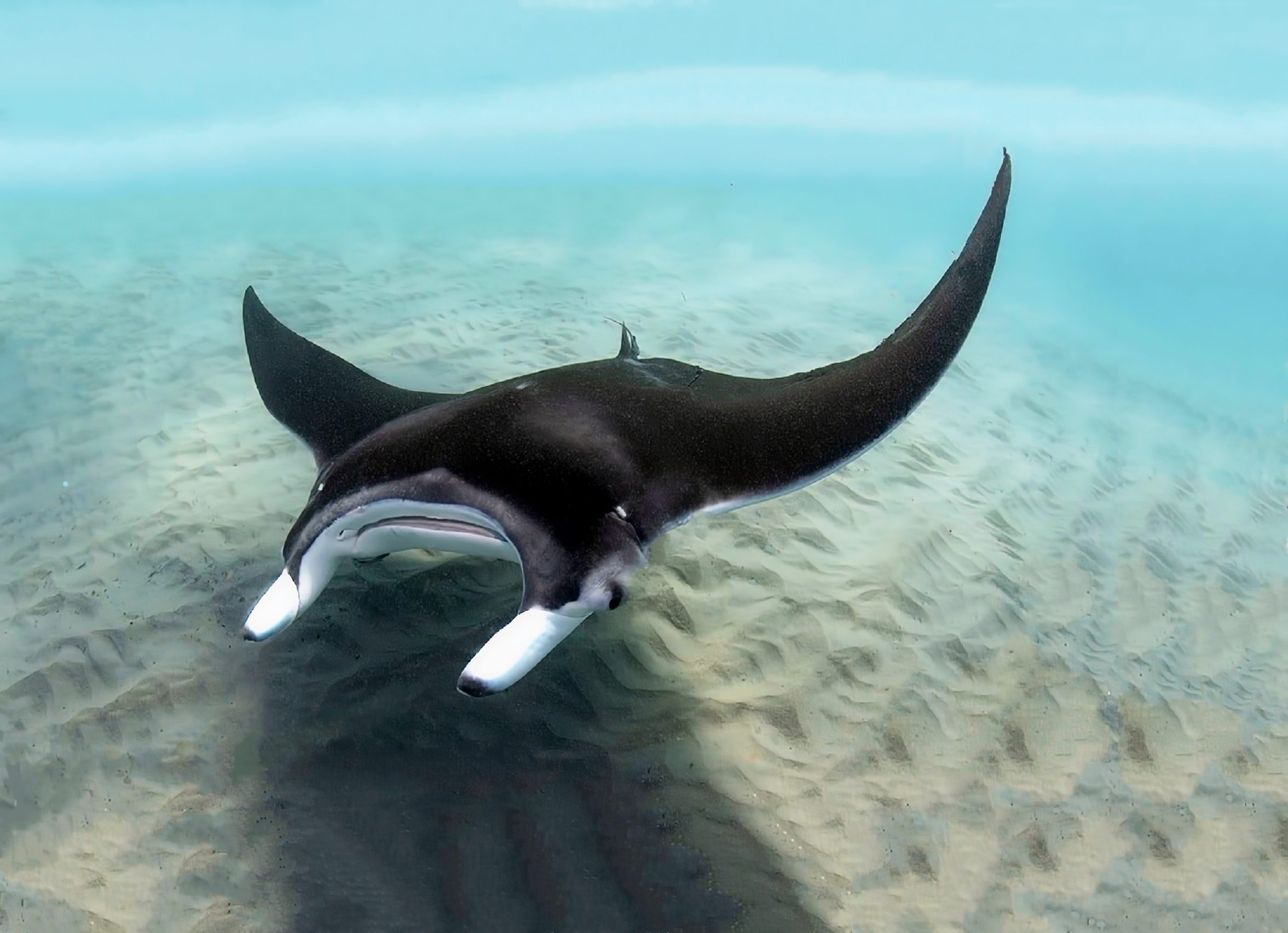
The Devil Fish, also known as the Giant Manta Ray, is a majestic creature that glides gracefully through the world’s oceans. It can have a wingspan of up to 29 feet, making it one of the largest species of rays. The Devil Fish is known for its large, triangular pectoral fins and distinctive horn-like cephalic fins on either side of its mouth. Despite its intimidating size and name, it is a gentle giant, feeding primarily on plankton. The species is threatened by fishing and habitat loss, and efforts are being made to protect its populations.
Whale Shark
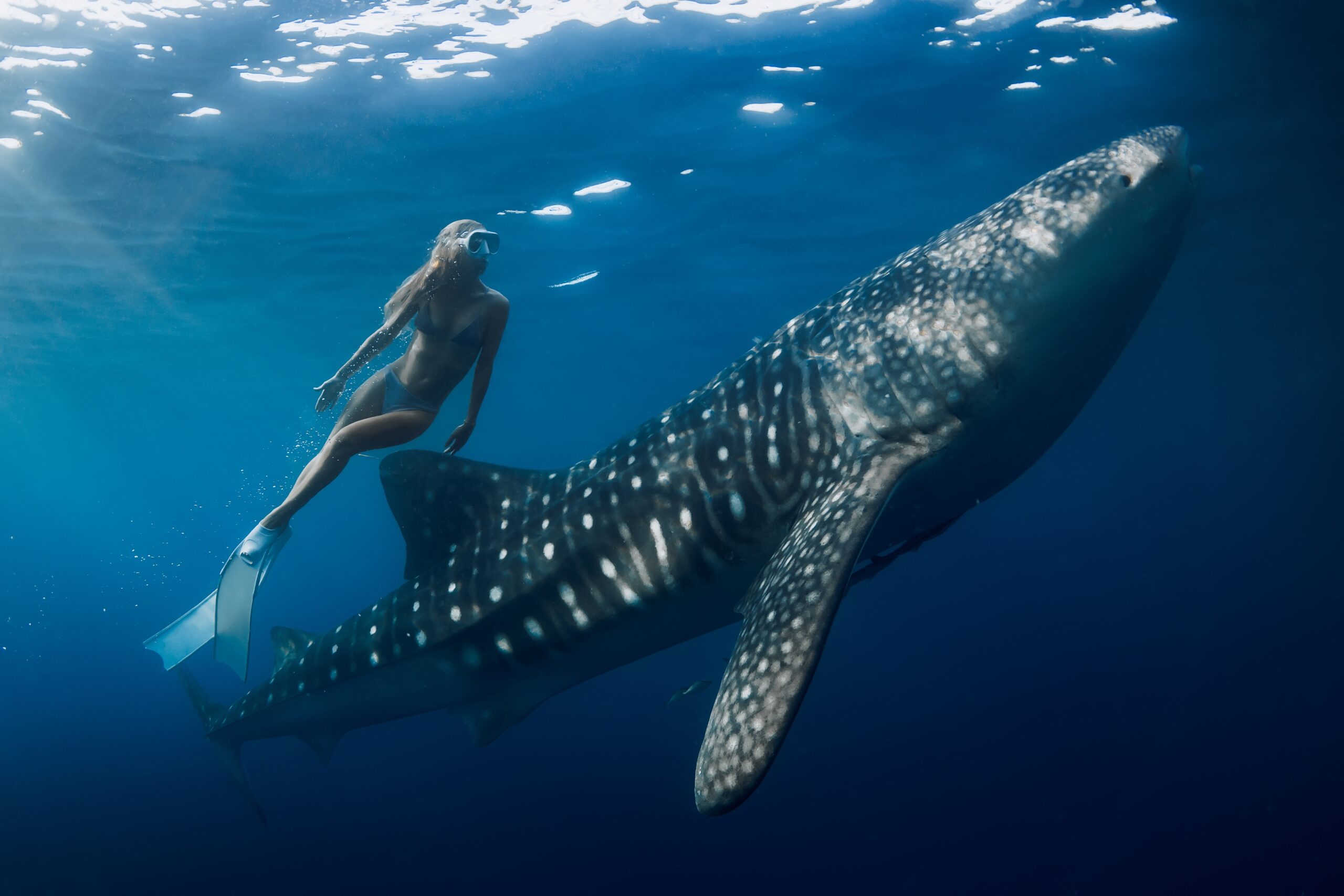
The Whale Shark is the largest fish in the world, capable of reaching lengths of up to 40 feet or more. This gentle giant is found in tropical and warm-temperate seas, where it feeds on plankton and small fish by filter-feeding. Despite its size, the Whale Shark is known for its docile nature, often swimming near the surface. It has a distinctive pattern of white spots on its dark gray body, which researchers use to identify individuals. The species is vulnerable due to overfishing and habitat destruction, making conservation efforts crucial.
Arapaima
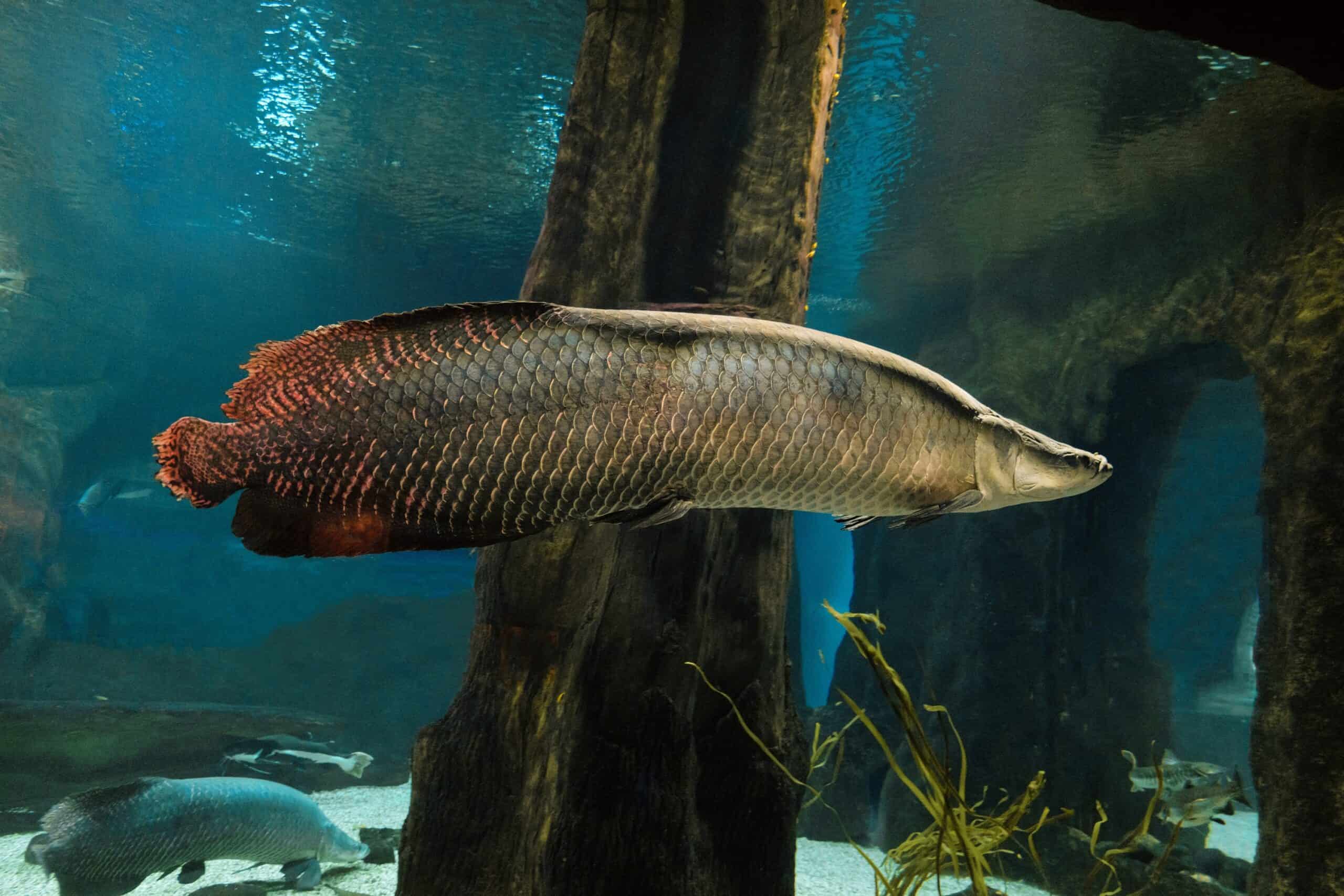
The Arapaima is one of the largest freshwater fish species, native to the Amazon River Basin. It can grow up to 10 feet long and weigh over 400 pounds. This prehistoric fish has a sleek, torpedo-shaped body with large, bony scales that provide protection. The Arapaima is an air-breathing fish, coming to the surface to gulp air, which allows it to survive in oxygen-poor waters. Its diet consists of fish, birds, and small mammals. Overfishing and habitat loss have threatened its populations, but conservation efforts are underway to protect this remarkable species.
Red Handfish
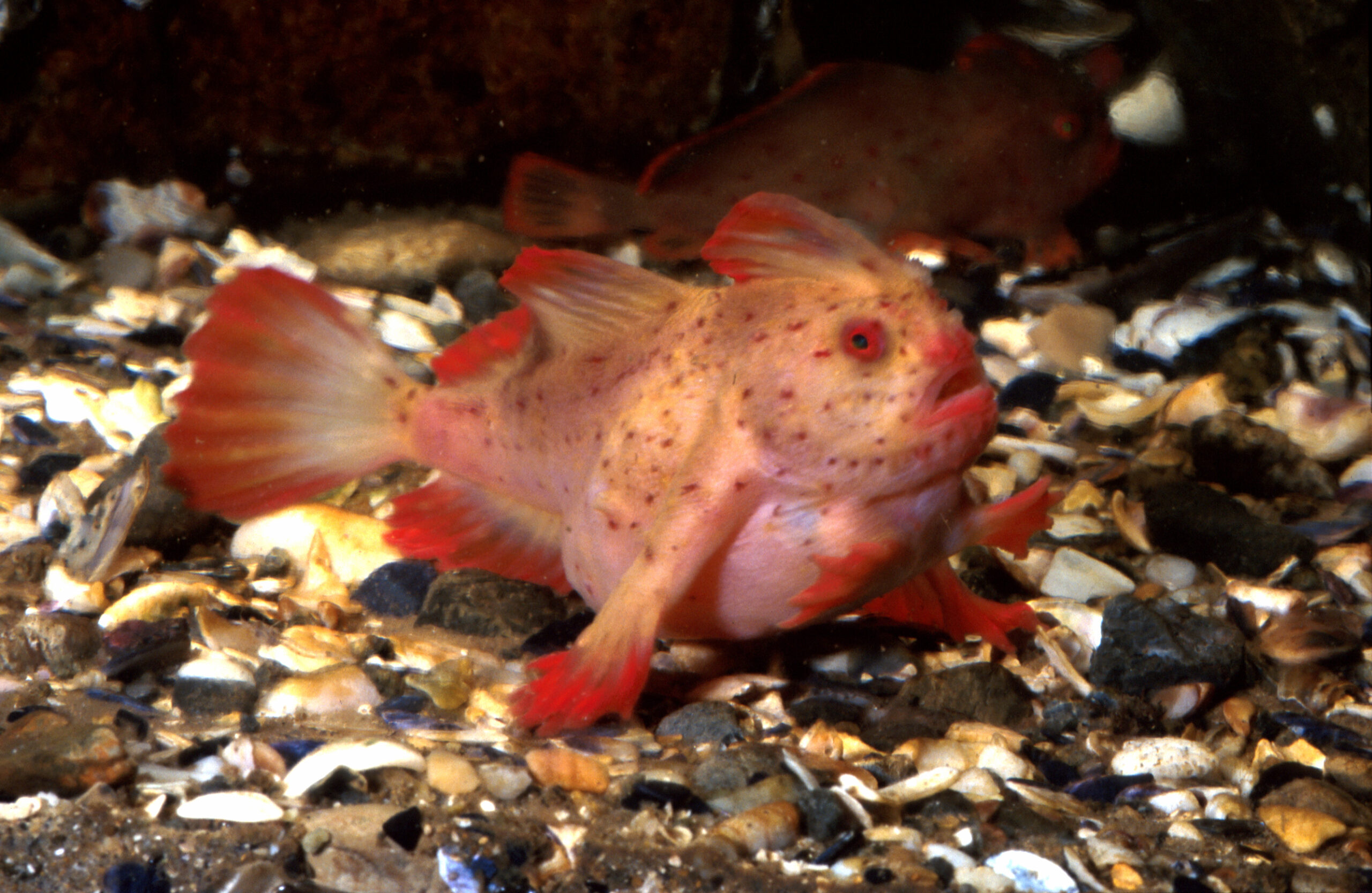
The Red Handfish is a unique and rare species found off the coast of Tasmania, Australia. It is known for its unusual method of locomotion, using its hand-like pectoral fins to walk along the seafloor. This small fish has a bright red coloration with dark spots, providing excellent camouflage among the coral and rocks. It grows to about 6 inches in length and is critically endangered due to its limited range and habitat degradation. The Red Handfish’s survival depends on the protection of its fragile coastal environment, where it plays a crucial role in the ecosystem.
Wrought Iron Butterflyfish
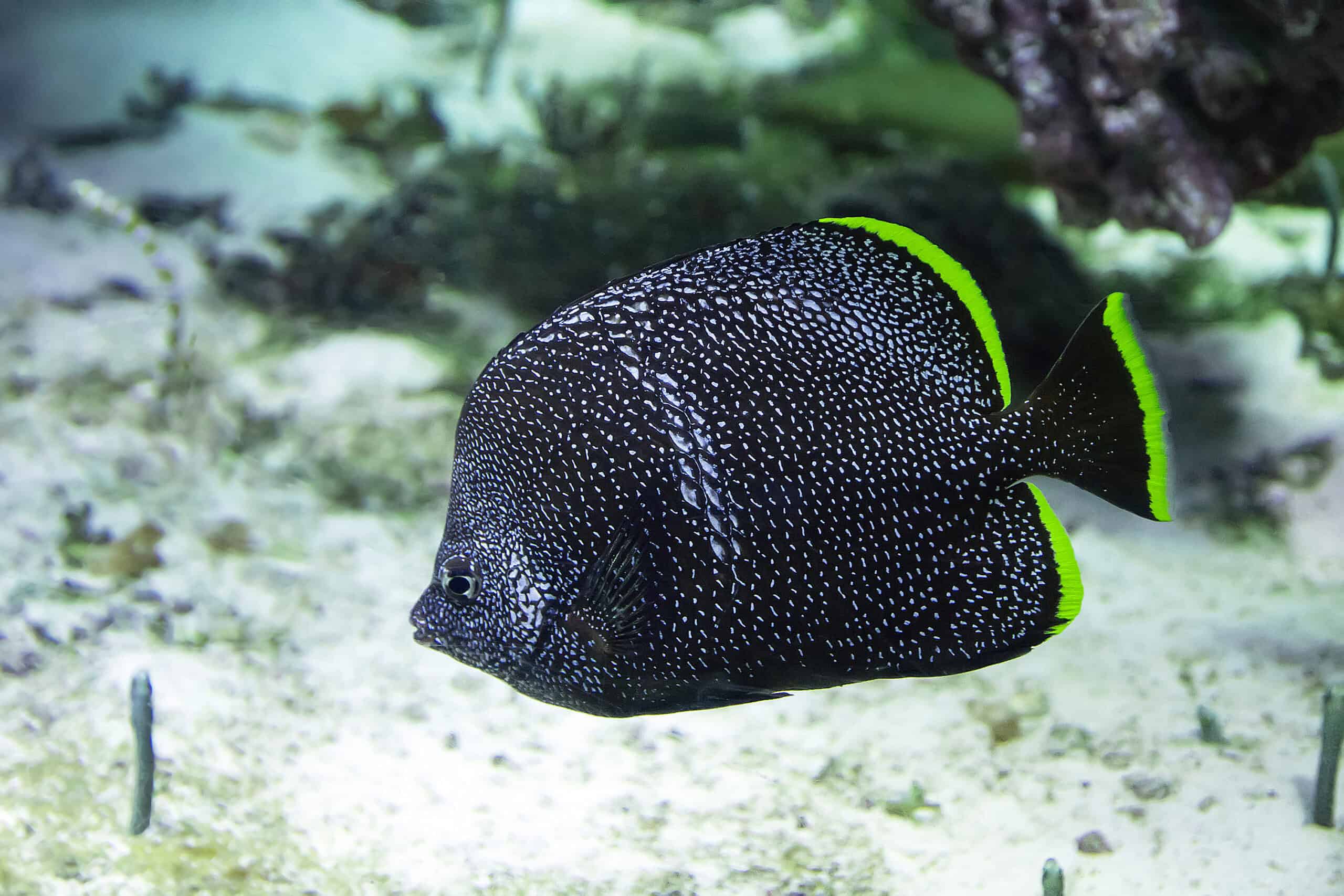
The Wrought Iron Butterflyfish is a strikingly beautiful species found in the waters surrounding Japan. Its body is a dark, almost metallic black, with bright yellow accents along the edges of its fins. This fish is relatively small, reaching only about 6 inches in length, but its bold coloration makes it highly visible in its coral reef habitat. It thrives in the clear, warm waters, where it feeds on small invertebrates and coral polyps. The Wrought Iron Butterflyfish is rare due to its limited range and the specific conditions it requires to survive, making it a prized sight for divers.
Quillfin Blenny
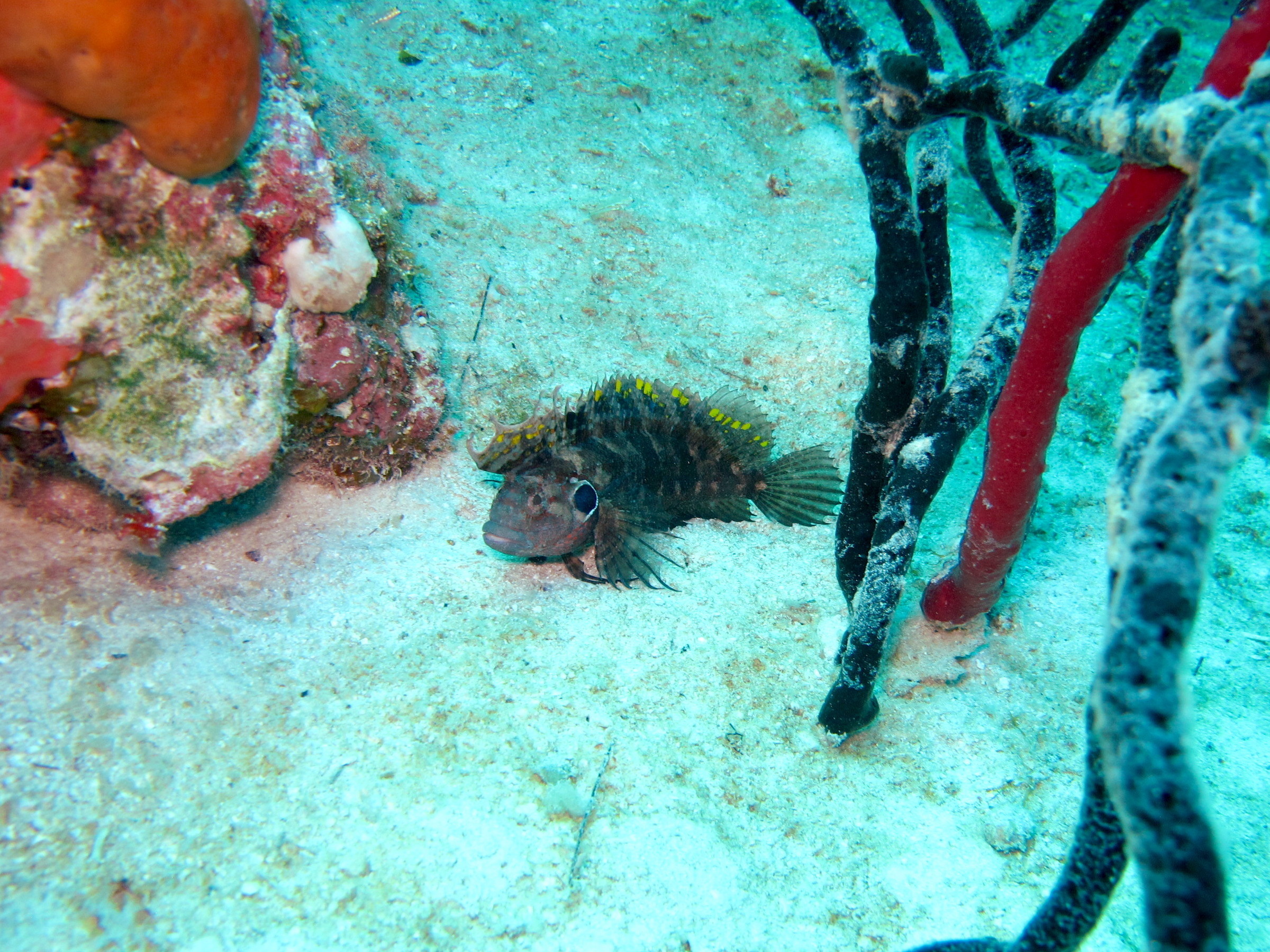
The Quillfin Blenny is a small, colorful fish known for its elongated dorsal fin that resembles a quill. Found in the shallow, tropical waters of the Indo-Pacific region, this blenny is a master of camouflage. It blends seamlessly with the rocks and coral, making it difficult to spot. The Quillfin Blenny reaches about 3 inches in length and displays vibrant hues of blue, green, and red. It is a bottom-dweller, spending most of its time hiding in crevices and feeding on small crustaceans. Its rarity and unique appearance make it a fascinating species in the marine world.
Psychedelic Frogfish
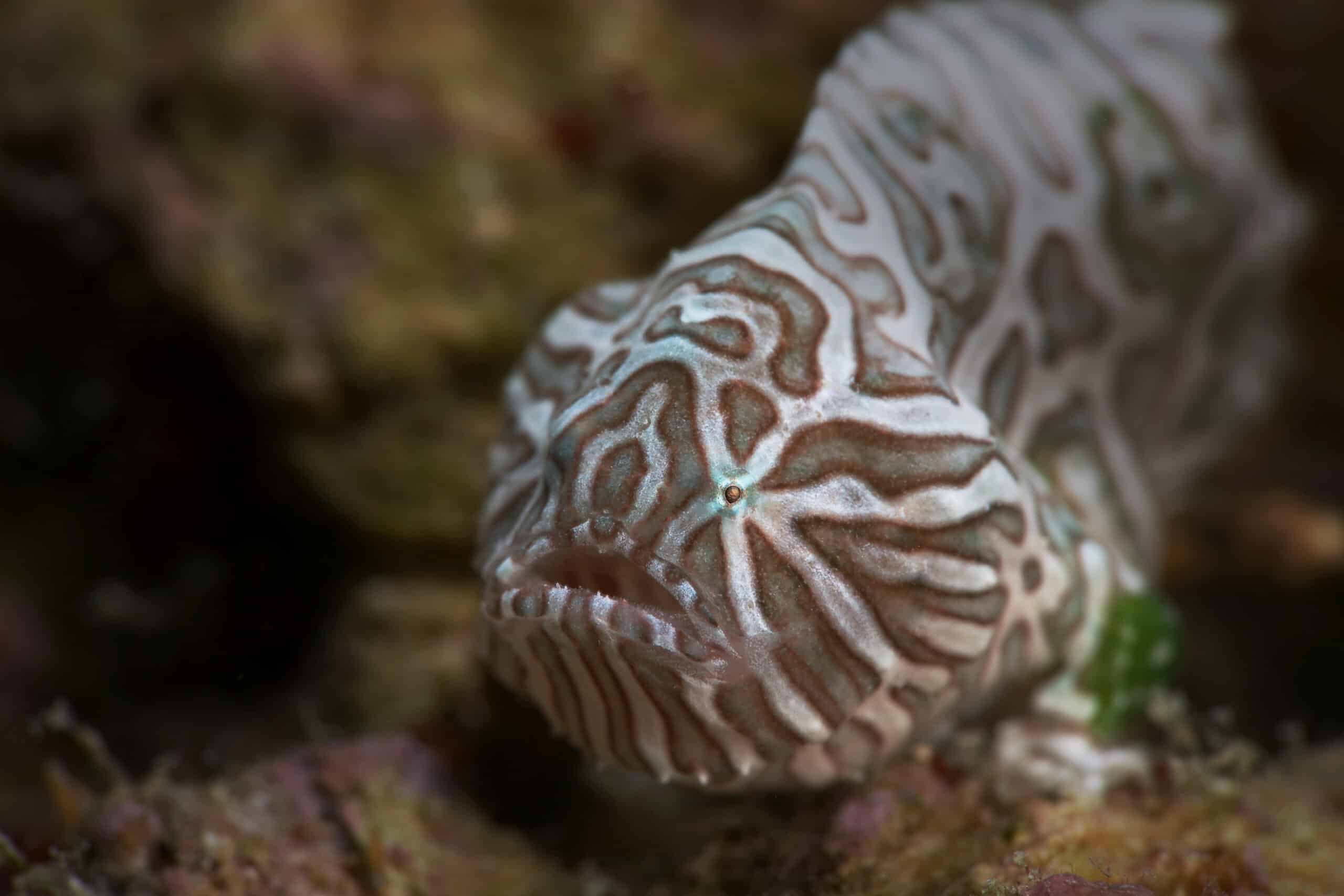
The Psychedelic Frogfish is a bizarre and rare species found only in the waters around Ambon Island, Indonesia. Its body is covered in intricate, swirling patterns of pink, orange, and white, giving it a psychedelic appearance. This fish is small, typically growing to about 6 inches in length, and has a lumpy, almost warty texture. It is known for its ability to “walk” along the seafloor using its pectoral fins, and it can change its coloration to blend in with its surroundings. The Psychedelic Frogfish is a master of disguise, making it difficult to spot despite its vivid colors.
Golden Trout
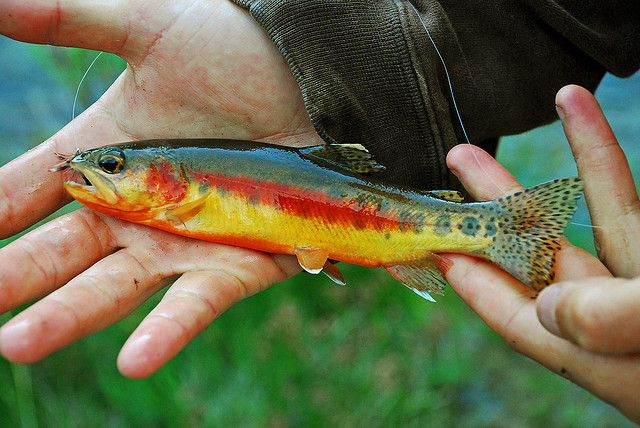
The Golden Trout is a rare and stunningly beautiful fish native to the high-altitude streams of California’s Sierra Nevada mountains. It is easily recognized by its bright, golden-yellow body, with a vivid red stripe along its sides. This fish is relatively small, usually reaching about 10 to 12 inches in length, but it is prized for its vibrant coloration and rarity. The Golden Trout thrives in the cold, clear waters of alpine streams, where it feeds on insects and small invertebrates. Its survival depends on the pristine quality of its habitat, making it a symbol of unspoiled wilderness.
Mandarinfish
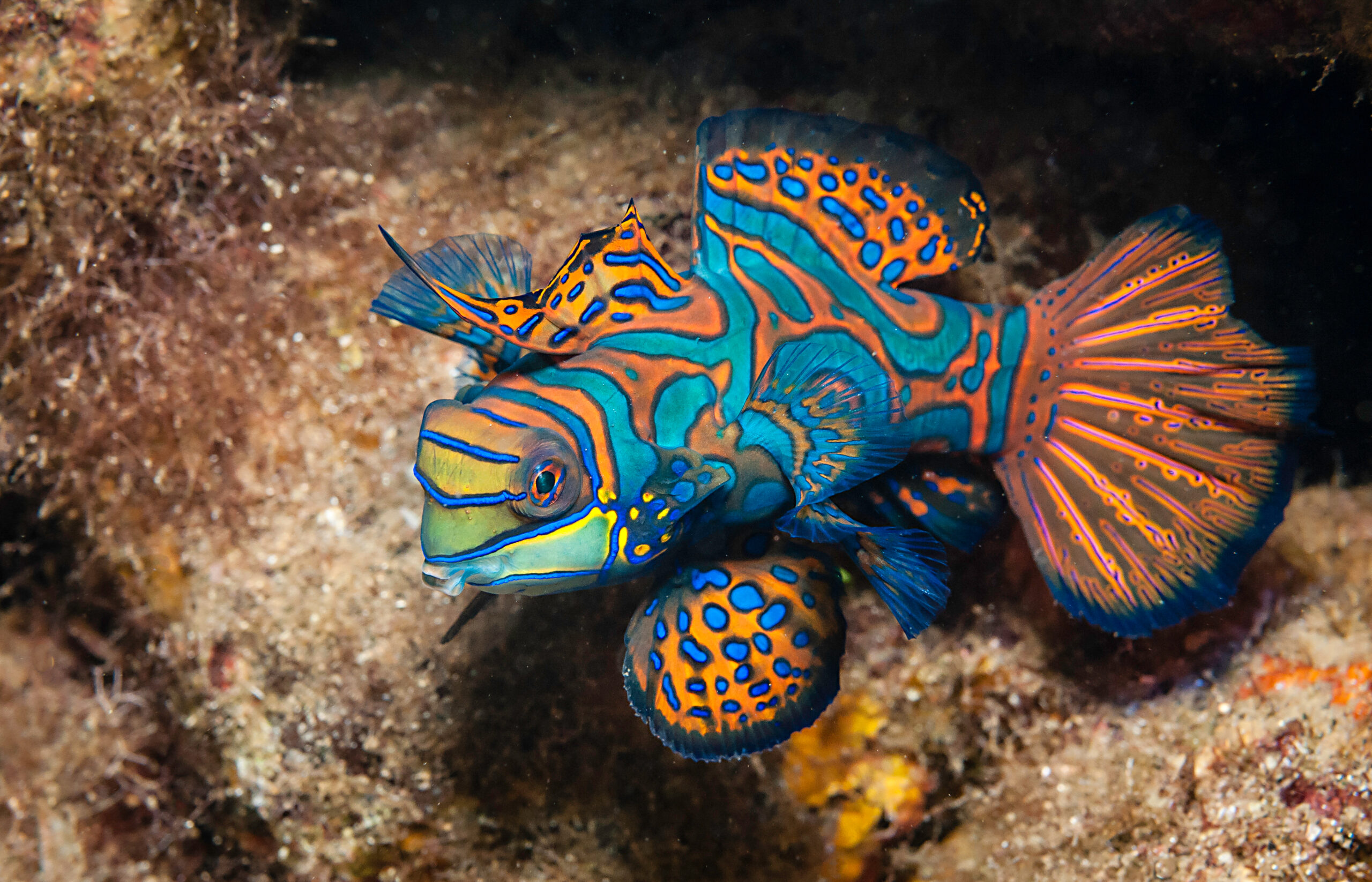
The Mandarinfish is one of the most vividly colored fish in the world, found in the coral reefs of the Pacific Ocean. Its body is covered in an intricate pattern of blue, orange, and green, with a vibrant sheen that seems to glow underwater. This small fish, typically about 3 inches long, is known for its unique, undulating swimming motion. It feeds on small crustaceans and is often seen in pairs during its mating ritual. The Mandarinfish is rare due to its specific habitat requirements and the challenges of breeding in captivity, making it a highly sought-after species in the aquarium trade.
Goliath Tigerfish
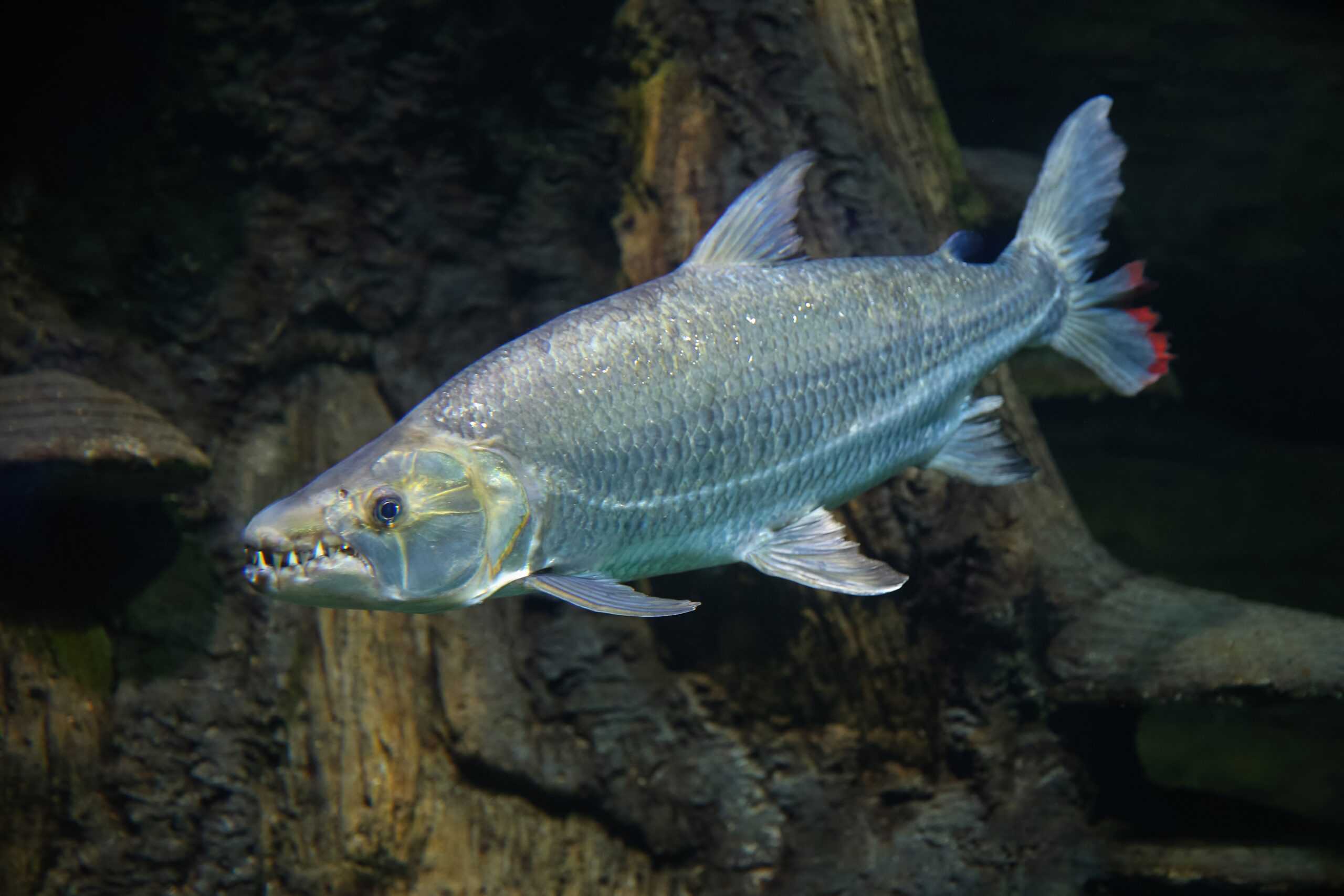
The Goliath Tigerfish is a fearsome predator found in the Congo River Basin in Africa. This massive fish can grow up to 5 feet long and weigh over 100 pounds, with sharp, dagger-like teeth that protrude even when its mouth is closed. It is known for its aggressive nature and incredible strength, making it one of the most formidable freshwater fish. The Goliath Tigerfish hunts other fish, often in turbulent waters, using its speed and power to capture prey. Its rarity and the remote nature of its habitat make encounters with this species extremely rare.
Mekong Giant Catfish
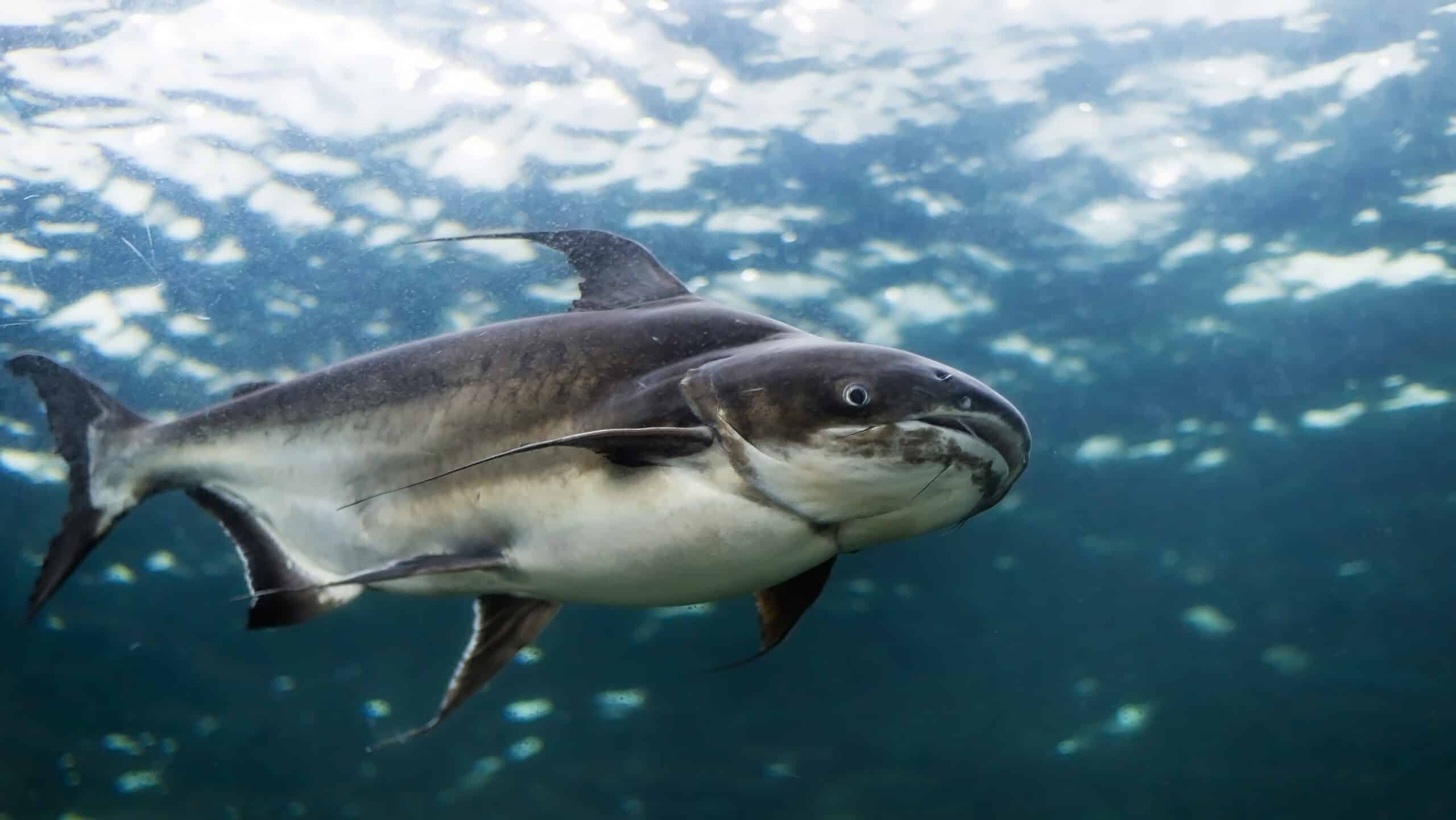
The Mekong Giant Catfish is one of the largest freshwater fish in the world, native to the Mekong River in Southeast Asia. It can reach lengths of up to 10 feet and weigh as much as 660 pounds, making it a true river giant. This catfish has a smooth, scaleless body and a broad, flat head, with barbels around its mouth that help it sense its environment. It is a gentle giant, feeding primarily on algae and other plant material. The Mekong Giant Catfish is critically endangered due to overfishing and habitat loss, with conservation efforts focused on preserving its dwindling populations.
Asian Arowana
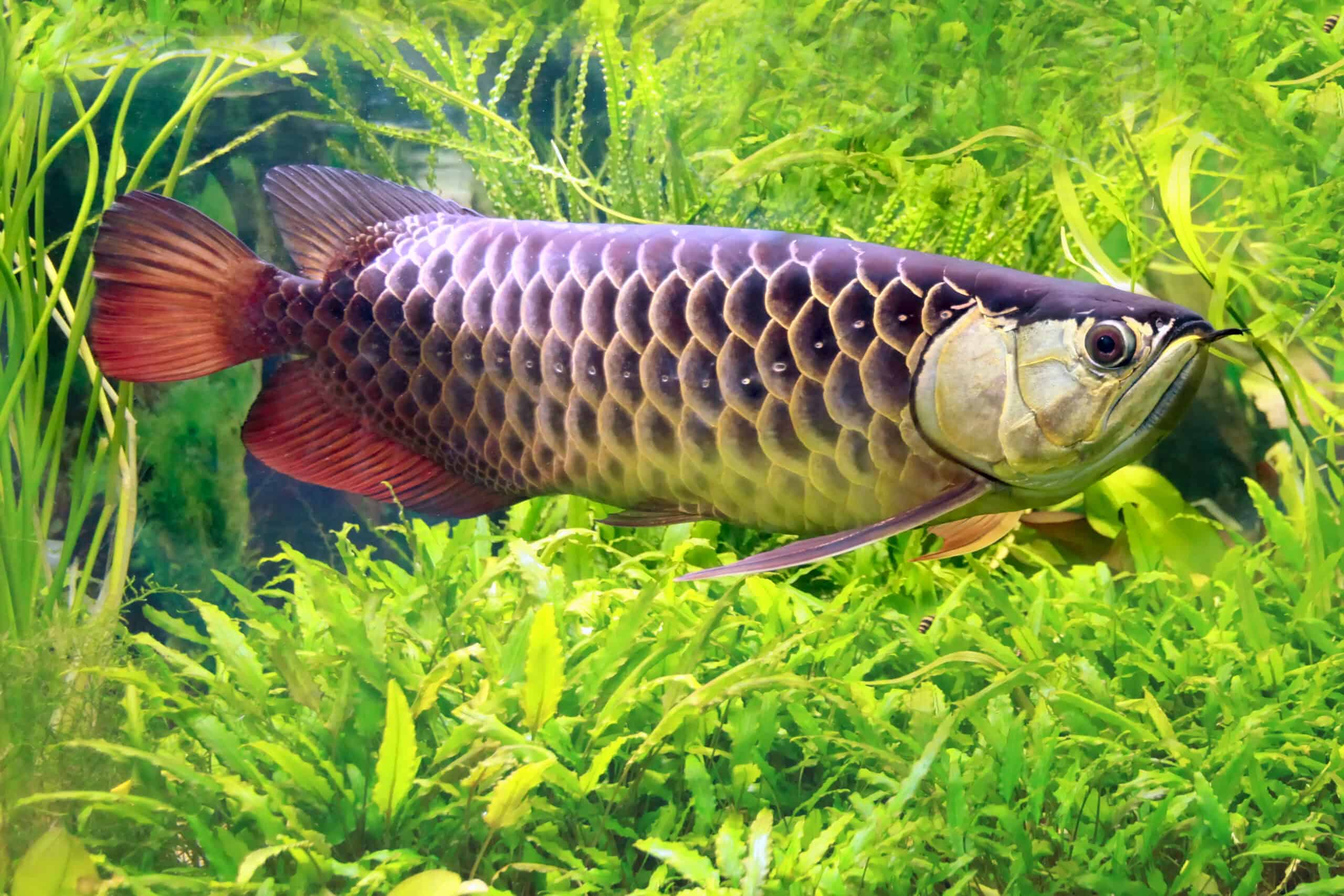
The Asian Arowana, also known as the Dragon Fish, is a highly prized species in the aquarium trade, revered for its beauty and symbolism. It has a long, sleek body covered in large, metallic scales that shimmer in shades of gold, red, or green. This fish can grow up to 3 feet in length and is known for its graceful swimming and ability to jump out of the water to catch prey. The Asian Arowana is native to the rivers and swamps of Southeast Asia, where it feeds on insects, small fish, and crustaceans. Due to overfishing and habitat destruction, it is considered endangered in the wild.
Ribbon Eel
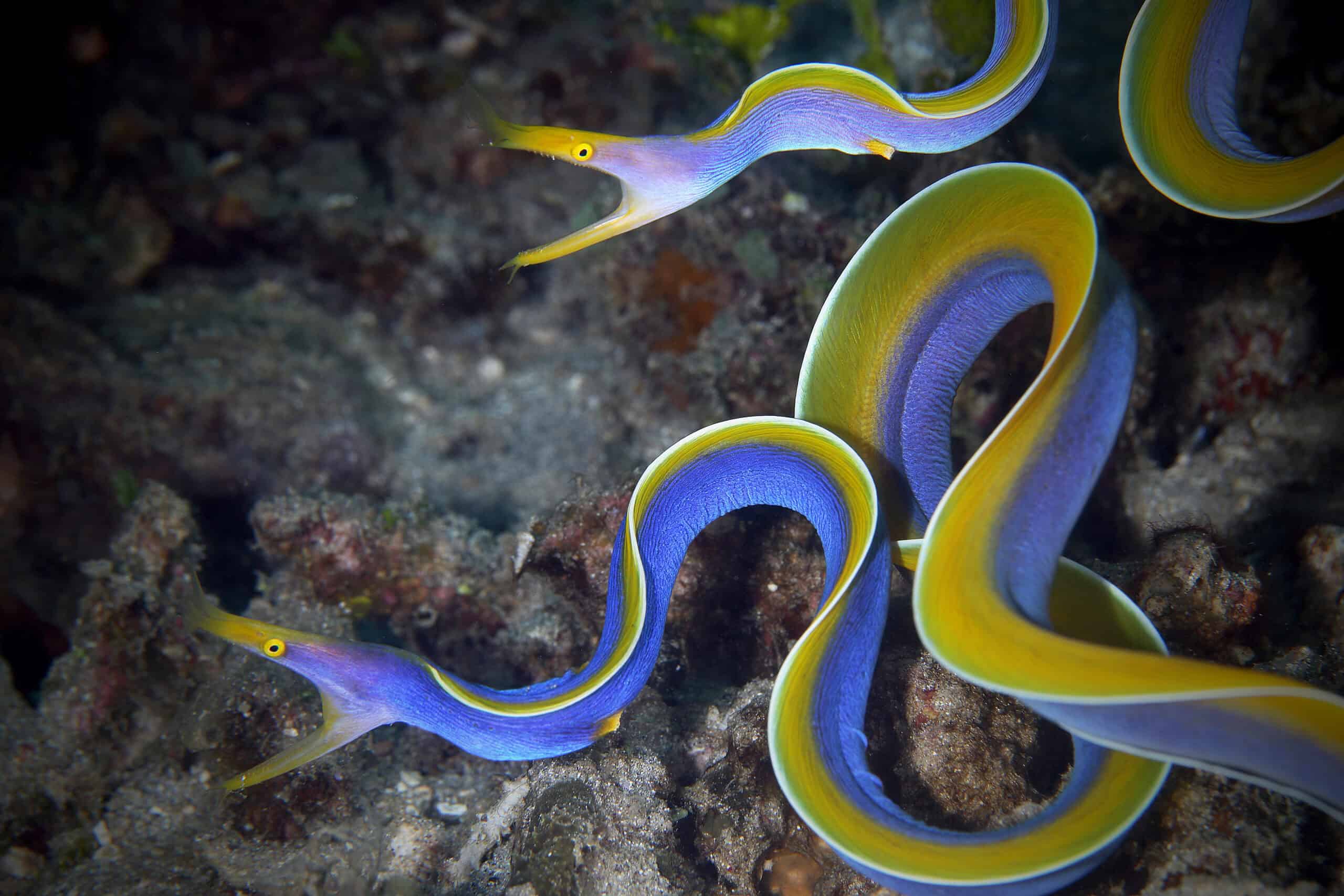
The Ribbon Eel is a slender, snake-like fish found in the coral reefs of the Indo-Pacific region. It is known for its striking coloration, with a bright blue or black body and a yellow stripe running along its length. This eel can grow up to 3 feet long and has a ribbon-like appearance, which it uses to hide among the crevices of the reef. The Ribbon Eel is a solitary creature, spending most of its life hidden in a burrow, where it waits to ambush prey. Its unique appearance and behavior make it a fascinating species to observe in the wild.
Giant Oarfish
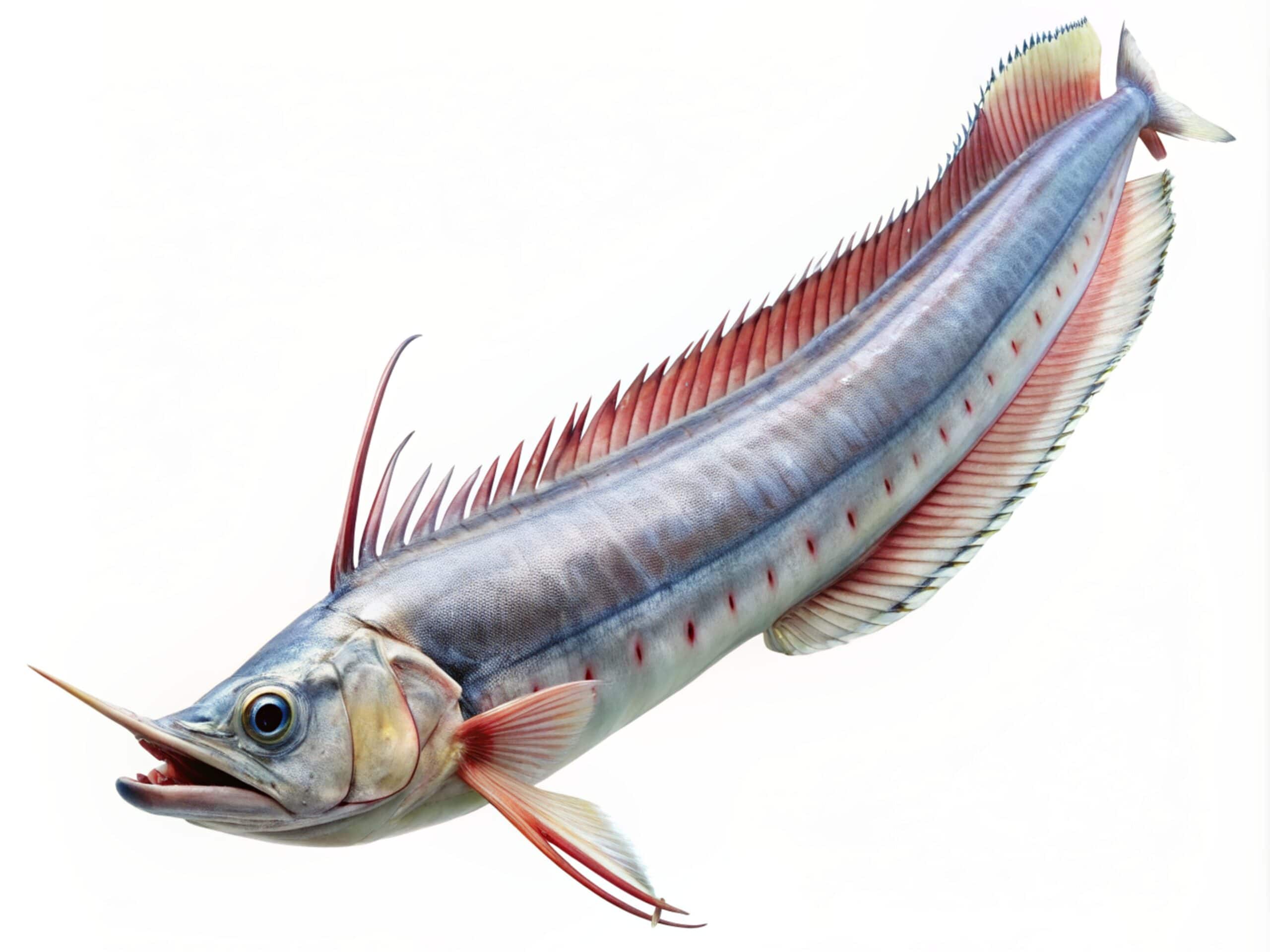
The Giant Oarfish is the longest bony fish in the world, capable of reaching lengths of up to 36 feet. This deep-sea dweller has a long, ribbon-like body that is silver in color, with a bright red dorsal fin running along its length. It is often referred to as the “sea serpent” due to its elongated shape and undulating swimming motion. The Giant Oarfish is rarely seen by humans, as it inhabits deep, oceanic waters. It feeds on plankton and small fish, using its long, slender body to navigate the depths. Its rare appearances near the surface often lead to tales of sea monsters in maritime folklore.
This article originally appeared on Rarest.org.
More from Rarest.org
1955 Jefferson Nickel Value Guide

The 1955 Jefferson nickel is a popular coin for many collectors today. Although the face value of this coin is just 5 cents, some come with a high collectible value. Read More.
1951 Wheat Penny Value Guide

The Lincoln cent, also known as the Lincoln penny, has a face value of $0.01. The U.S. Mint has struck this coin since 1909. Read More.
1945 Washington Quarter Value Guide

At that time when the Committee of Coinage, Weights and Measures found that Standing Liberty quarter to be unsatisfactory, they decided to replace it with Washington’s profile in 1932. Read More.
